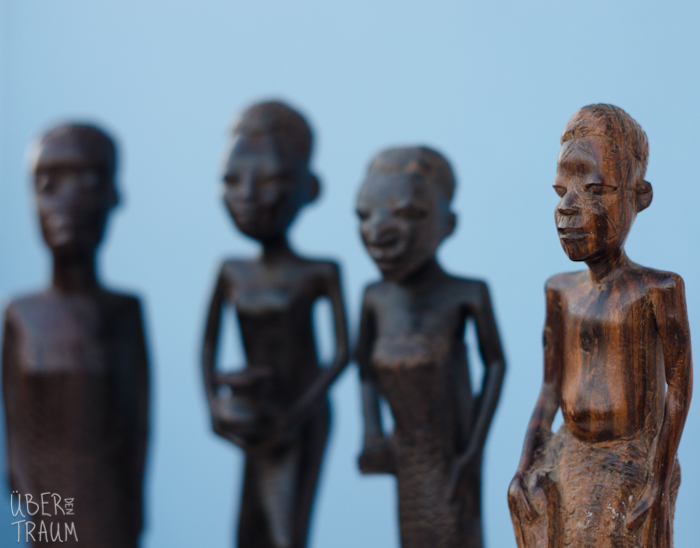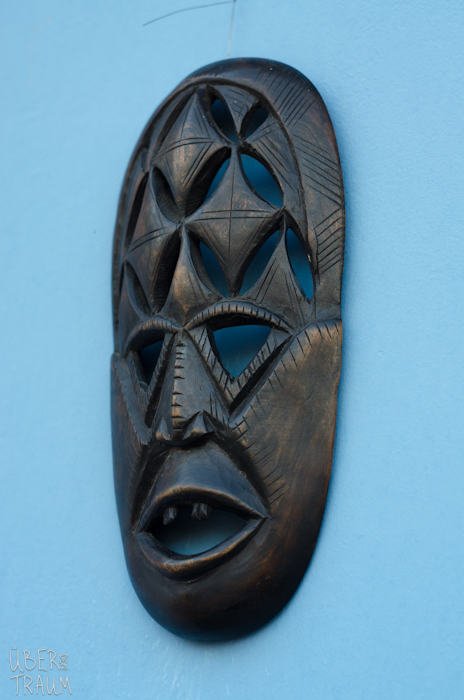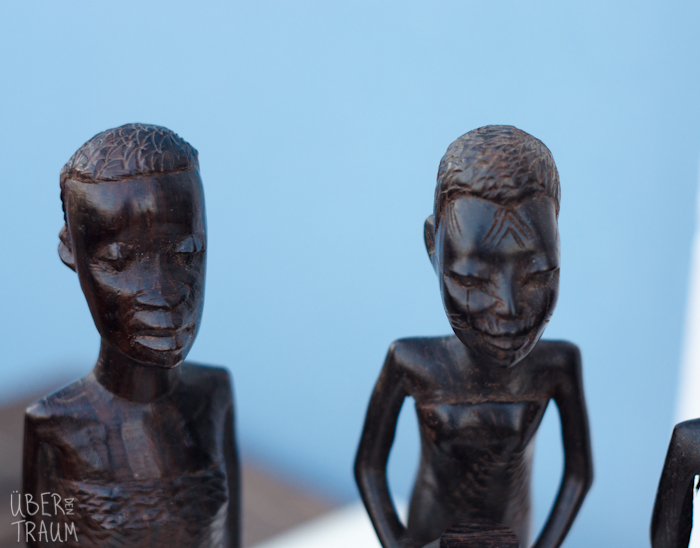African Art is the second installment of our series ‘Exploring the History and Identity of Vintage‘.
African Art is a term most commonly used for the art of Sub-Saharan Africa. The distinction exists, because North Africa and Ethiopia have been heavily influenced by Islam and Christianity respectively, in the creation of their art, in contrast with the rest of the continent, where Traditional African religion has been dominant until relatively recently.
Wood as well as other natural materials is historically the material of preference for African Art, but because of it’s vulnerability against time, art examples have not survived from earlier than a few centuries ago. As Africa is a big a continent, the array of styles utilized is as big, but regional trends are also pretty apparent. Wooden sculptures are most common in West Africa, where many figures are also used in religious ceremonies and offerings. In East Africa, paintings and textile art flourish, mostly due to shortage of large enough timber to create carvings.
History
The history of African Art dates long before the start of recorded history. There is rock art in the Sahara that preserves 6000 year old carvings, ancient Egyptian monuments, paintings, artifacts, in modern Nigeria Nok sculptures dating from between 500 BC and 500 AD, 10th century works such as the bronzework of Igbo Ukwu and the terracottas and metalworks of Ile Ife bronze and brass castings.
Traditional art
Traditional art describes the most popular and studied forms of African art which are typically found in museum collections.
A significant part of Sub-Saharan Art, are African masks, the essential ritual and ceremonial objects of traditional culture. The art of making them is usually passed from father to son, along with the knowledge of the symbolic meanings conveyed by such masks.
In most cultures, the person that wears the mask conceptually loses his or her human identity and turns into the spirit represented by the mask itself. This way, the mask becomes the medium that allows for a dialogue between the community and the spirits. Masked dancing is part of most traditional African ceremonies related to significant life events, such as weddings, funerals, initiation rites, etc. The masks can be worn in three different ways: vertically covering the face: as helmets, encasing the entire head, and as crest, resting upon the head, which was commonly covered by material as part of the disguise.
The masks are usually shaped after a human face or some animals muzzle, sometimes depicted in highly abstract form. They are made with wood, and can be decorated with: Ivory, animal hair, plant fibers (such as raffia), pigments (like kaolin), stones, and semi-precious gems. There is an inherent lack of realism in African masks, and in African art in general. The reason for this, and what is actually interesting about this trend, is, that most African cultures clearly distinguish the essence of an object from it’s looks, with the the essence and not the looks, being the actual subject of artistical representation.
Statues, usually of wood or ivory, are often inlaid with cowrie shells, metal studs and nails. Decorative clothing is also commonplace and comprises another large part of African art. Among the most complex of African textiles is the colorful, strip-woven Kente cloth of Ghana. Boldly patterned mudcloth is another well known technique.
Such objects have influenced Western, South & Central American Art in general in different forms, such as cubism, fauvism, expressionism, masked Carnival parades. Their popularity has given a commercial value to the objects, which in turn gave rise to their mass commercial reproduction. While designs remain even today, mostly faithful to the traditional form, it is becoming harder over time, to pinpoint their actual geographical and cultural origins.
Zambia
While the world is looking in another direction art flourishes in Zambia on a shoestring. Zambia is arguably home to some of the world’s most creative and talented artists. The desire of artists in Zambia to create is so strong that they will use anything. From burlap sacks to car paint, even old bed sheets are often used in the place of canvases as the materials for art. Garbage and detritus are turned in works of art that are often staggering in their scope. The tradition of fine art, in the Western concept of the term, in Zambia goes back to colonial times and has been steadily growing ever since. Thanks to institutions like the Lechwe Trust, the Zambia’s body of art is assured a home in the country it was created.







